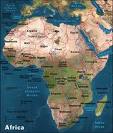The Real Story about the Famine in the Horn of Africa: The Humanitarian Aid Business

I knew the real story about the famine in northern Kenya and Somalia would probably never be told when I watched a young foreign aid worker “reporting” the famine for CNN in Dadaab camp.The young white woman, clearly coached to use the opportunity of her CNN appearance to publicise her organisation, wore a T-shirt that had the word OXFAM emblazoned on it.
The look of self-righteous, politically-correct compassion was evident on her face as she talked of starving children and emaciated mothers walking for miles in search of food.Predictably, CNN viewers saw images of skeletal children and exhausted women with shrivelled breasts, images that have launched a multi-million dollar fund-raising campaign by the UN and donor agencies.
UN secretary-general Ban Ki-moon has asked donors to raise $1.6 billion to assist Somalia alone.Meanwhile, dozens of humanitarian agencies are clamouring to make an appearance in Dadaab in order to raise funds for their own organisations. Dutch journalist Linda Polman calls it “The Crisis Caravan”.
In her book by the same name, Polman says that an entire industry has grown around humanitarian aid, “with cavalcades of organisations following the flow of money and competing with each other in one humanitarian territory after another for the biggest achievable share of billions.”According to Polman, disasters like the one in Somalia attract an average 1,000 national and international aid organisations. This doesn’t include “briefcase” charities that collect funds through churches, clubs and bake-sales.
Much of the money raised goes to administrative and logistical costs of aid agencies, including the salaries of bright-eyed aid workers, such as the one described above, who drive big cars and live in nice houses, but tell people back home they live in hardship areas where they help starving Africans.Are people starving? Yes. Should they be helped? Of course.
But how much of the food that is supposed to be distributed will most likely be stolen by militia or find its way to shops where it will be sold?
Also obscured in the media hype is the real cause of famine in places such as Somalia.
In a recent article, Michel Chossudovsky, professor of Economics at the University of Ottawa and founder of the Centre for Research on Globalisation, argues that in the 1980s, agriculture in Somalia was severely affected by economic reforms imposed by the IMF and the World Bank. Somalia remained self-sufficient in food until the late 1970s despite recurrent droughts, he writes.
The economic reforms, which included austerity measures and privatisation of essential services, destabilised the economy and destroyed agriculture.Wages in the public sector were drastically reduced, urban purchasing power declined dramatically and the cost of fuel, fertiliser and farm inputs shot up. This set the stage for the civil war in 1991, from which Somalia has yet to recover.
Famine and food aid became the norm, as hundreds of aid agencies set up shop to handle a crisis that was of their own making.In short, Somalia became a “business opportunity” that provided jobs to hundreds, if not thousands of (mostly Western) aid agency employees.Nicholas Stockton, a former Oxfam executive director, once called this phenomenon “the moral economy”.
Michael Maren, whose book, The Road to Hell, should be required reading for those who want to understand the politics and economy of food aid, shows how this aid suppressed local food production in Somalia, fuelled civil war and created a permanent food crisis.
This crisis and the lack of a strong, well-functioning central government have also resulted in a situation where aid agencies are zipping in and out of Somalia without any vetting by the government.
In effect, Somalia is being managed and controlled by aid agencies — the government is there in name only.
Unfortunately, this story is unlikely to be told on CNN, BBC, Sky TV or other global news networks that dominate the international news agenda.And it will certainly not be told by the aid workers whose livelihoods depend on donor money that will soon flow into Somalia via Kenya.
Nor will the Somali people be given an opportunity to explain to viewers what impact food aid and foreign intervention have had on their lives.
Rasna Warah is an analyst and commentator based in Nairobi.
This e-mail address is being protected from spambots. You need JavaScript enabled to view it.

